SNOSAI3D October 2006 – September 2015 LMV951
PRODUCTION DATA.
6 Specifications
6.1 Absolute Maximum Ratings
See (1)(2)| MIN | MAX | UNIT | ||
|---|---|---|---|---|
| Supply Voltage (V+ – V−) | 3.1 | V | ||
| VIN Differential | ±0.3 | V | ||
| Voltage at Input and Output Pin | (V+) + 0.3 | (V−) − 0.3 | V | |
| Current at Input Pin | ±10 | mA | ||
| Junction Temperature (1) | –40 | 150 | °C | |
| Mounting Temperature, Infrared or Convection (20 s) | 235 | °C | ||
| Storage temperature | –60 | 150 | °C | |
(1) Absolute Maximum Ratings indicate limits beyond which damage to the device may occur. Recommended Operating Conditions indicate conditions for which the device is intended to be functional, but specific performance is not ensured. For ensured specifications and the test conditions, see the Electrical Characteristics.
(2) If Military/Aerospace specified devices are required, please contact the Texas Instruments Sales Office/ Distributors for availability and specifications.
6.2 ESD Ratings
| VALUE | UNIT | |||
|---|---|---|---|---|
| V(ESD) | Electrostatic discharge | Human body model (HBM), per ANSI/ESDA/JEDEC JS-001(1)(2) | ±2000 | V |
| Machine model | ±200 | |||
(1) JEDEC document JEP155 states that 500-V HBM allows safe manufacturing with a standard ESD control process.
(2) Human Body Model, applicable std. MIL-STD-883, Method 3015.7. Machine Model, applicable std. JESD22-A115-A (ESD MM std. of JEDEC) Field-Induced Charge-Device Model, applicable std. JESD22-C101-C (ESD FICDM std. of JEDEC).
6.3 Recommended Operating Conditions
| MIN | MAX | UNIT | |
|---|---|---|---|
| Temperature Range (1) | –40 | 125 | °C |
| Supply Voltage | 0.9 | 3 | V |
(1) The maximum power dissipation is a function of TJ(MAX), RθJA. The maximum allowable power dissipation at any ambient temperature is PD = TJ(MAX) - TA)/RθJA. All numbers apply for packages soldered directly onto a PC Board.
6.4 Thermal Information
| THERMAL METRIC(1) | LMV951 | UNIT | |
|---|---|---|---|
| DDC (SOT) | |||
| 6 PINS | |||
| RθJA | Junction-to-ambient thermal resistance(1) | 170 | °C/W |
(1) For more information about traditional and new thermal metrics, see the Semiconductor and IC Package Thermal Metrics application report, SPRA953.
6.5 Electrical Characteristics: 1 V
Unless otherwise specified, all limits specified for at TA = 25°C, V+ = 1, V− = 0 V, VCM = 0.5 V, Shutdown = 0 V, and RL = 1 MΩ.(1)| PARAMETER | TEST CONDITIONS | MIN(2) | TYP(3) | MAX(2) | UNIT | ||
|---|---|---|---|---|---|---|---|
| VOS | Input Offset Voltage | TA = 25°C | 1.5 | 2.8 | mV | ||
| At the temperature extremes | 3 | ||||||
| TC VOS | Input Offset Average Drift | 0.15 | μV/°C | ||||
| IB | Input Bias Current | TA = 25°C | 32 | 80 | nA | ||
| At the temperature extremes | 85 | ||||||
| IOS | Input Offset Current | 0.2 | nA | ||||
| CMRR | Common-Mode Rejection Ratio | 0 V ≤ VCM ≤ 1 V | TA = 25°C | 67 | 77 | dB | |
| At the temperature extremes | 55 | ||||||
| 0.1 V ≤ VCM ≤ 1 V | TA = 25°C | 76 | 85 | ||||
| At the temperature extremes | 73 | ||||||
| PSRR | Power Supply Rejection Ratio | 1 V ≤ V+ ≤ 1.8 V, VCM = 0.5 V | TA = 25°C | 70 | 92 | dB | |
| At the temperature extremes | 67 | ||||||
| 1 V ≤ V+ ≤ 3 V, VCM = 0.5 V | TA = 25°C | 68 | 85 | ||||
| At the temperature extremes | 65 | ||||||
| VCM | Input Common-Mode Voltage Range | CMRR ≥ 67 dB | 0 | 1.2 | V | ||
| CMRR ≥ 55 dB | At the temperature extremes | 0 | 1.2 | ||||
| AV | Large Signal Voltage Gain | VOUT = 0.1 V to 0.9 V RL = 600 Ω to 0.5 V |
TA = 25°C | 90 | 106 | dB | |
| At the temperature extremes | 85 | ||||||
| VOUT = 0.1 V to 0.9 V RL = 2 kΩ to 0.5 V |
TA = 25°C | 90 | 112 | ||||
| At the temperature extremes | 86 | ||||||
| VOUT | Output Voltage Swing High | RL = 600 Ω to 0.5 V | TA = 25°C | 50 | 25 | mV from rail |
|
| At the temperature extremes | 62 | ||||||
| RL = 2 kΩ to 0.5 V | TA = 25°C | 25 | 12 | ||||
| At the temperature extremes | 36 | ||||||
| Output Voltage Swing Low | RL = 600 Ω to 0.5 V | TA = 25°C | 70 | 32 | |||
| At the temperature extremes | 85 | ||||||
| RL = 2 kΩ to 0.5 V | TA = 25°C | 35 | 10 | ||||
| At the temperature extremes | 40 | ||||||
| IOUT | Output Short-Circuit Current (4) | Sourcing VO = 0 V, VIN(DIFF) = ±0.2 V |
TA = 25°C | 20 | 45 | mA | |
| At the temperature extremes | 15 | ||||||
| Sinking VO = 1 V, VIN(DIFF) = ±0.2 V |
TA = 25°C | 20 | 35 | ||||
| At the temperature extremes | 13 | ||||||
| IS | Supply Current | Active Mode VSD <0.4 V | 370 | 480 | μA | ||
| 520 | |||||||
| Shutdown Mode VSD >0.6 V | TA = 25°C | 0.01 | 1 | ||||
| At the temperature extremes | 3 | ||||||
| SR | Slew Rate | See (5) | 1.4 | V/μs | |||
| GBWP | Gain Bandwidth Product | 2.7 | MHz | ||||
| en | Input-Referred Voltage Noise | f = 1 kHz | 25 | nV/√Hz | |||
| in | Input-Referred Current Noise | f = 1 kHz | 0.2 | pA/√Hz | |||
| THD | Total Harmonic Distortion | f = 1 kHz, AV = 1, RL = 1 kΩ | 0.02% | ||||
| ISD | Shutdown Pin Current | Active Mode, VSD = 0 V | .001 | 1 | µA | ||
| Shutdown Mode, VSD = 1 V | .001 | 1 | |||||
| VSD | Shutdown Pin Voltage Range | Active Mode | 0 | 0.4 | V | ||
| Shutdown Mode | 0.65 | 1 | |||||
(1) Electrical table values apply only for factory testing conditions at the temperature indicated. Factory testing conditions is very limited self-heating of the device.
(2) All limits are specified by testing or statistical analysis.
(3) Typical values represent the most likely parametric norm as determined at the time of characterization. Actual typical values may vary over time and will also depend on the application and configuration. The typical values are not tested and are not ensured on shipped production material.
(4) The short-circuit test is a momentary test, the short-circuit duration is 1.5 ms.
(5) Number specified is the average of the positive and negative slew rates.
6.6 Electrical Characteristics: 1.8 V
Unless otherwise specified, all limits specified for at TA = 25°C, V+ = 1.8 V, V− = 0 V, VCM = 0.9 V, Shutdown = 0 V, and RL = 1 MΩ.(1)| PARAMETER | TEST CONDITIONS | MIN(2) | TYP(3) | MAX(2) | UNIT | ||
|---|---|---|---|---|---|---|---|
| VOS | Input Offset Voltage | TA = 25°C | 1.5 | 2.8 | mV | ||
| At the temperature extremes | 3 | ||||||
| TC VOS | Input Offset Average Drift | 0.15 | μV/°C | ||||
| IB | Input Bias Current | TA = 25°C | 36 | 80 | nA | ||
| At the temperature extremes | 85 | ||||||
| IOS | Input Offset Current | 0.2 | nA | ||||
| CMRR | Common-Mode Rejection Ratio | 0 V ≤ VCM ≤ 1.8 V | TA = 25°C | 82 | 93 | dB | |
| At the temperature extremes | 80 | ||||||
| PSRR | Power Supply Rejection Ratio | 1 V ≤ V+ ≤ 1.8V, VCM = 0.5 V | TA = 25°C | 70 | 92 | dB | |
| At the temperature extremes | 67 | ||||||
| 1 V ≤ V+ ≤ 3 V, VCM = 0.5 V | TA = 25°C | 68 | 85 | ||||
| At the temperature extremes | 65 | ||||||
| VCM | Input Common-Mode Voltage Range | CMRR ≥ 82 dB | –0.2 | 2 | V | ||
| CMRR ≥ 80 dB | At the temperature extremes | –0.2 | 2 | ||||
| AV | Large Signal Voltage Gain | VOUT = 0.2 to 1.6 V RL = 600 Ω to 0.9 V |
TA = 25°C | 86 | 110 | dB | |
| At the temperature extremes | 83 | ||||||
| VOUT = 0.2 to 1.6 V RL = 2 kΩ to 0.9 V |
TA = 25°C | 86 | 116 | ||||
| At the temperature extremes | 83 | ||||||
| VOUT | Output Voltage Swing High | RL = 600 Ω to 0.9 V | TA = 25°C | 50 | 33 | mV from rail |
|
| At the temperature extremes | 60 | ||||||
| RL = 2 kΩ to 0.9 V | TA = 25°C | 25 | 13 | ||||
| At the temperature extremes | 34 | ||||||
| Output Voltage Swing Low | RL = 600 Ω to 0.9 V | TA = 25°C | 80 | 54 | |||
| At the temperature extremes | 105 | ||||||
| RL = 2 kΩ to 0.9 V | TA = 25°C | 35 | 17 | ||||
| At the temperature extremes | 44 | ||||||
| IOUT | Output Short-Circuit Current (4) | Sourcing VO = 0 V, VIN(DIFF) = ±0.2 V |
TA = 25°C | 50 | 85 | mA | |
| At the temperature extremes | 35 | ||||||
| Sinking VO = 1.8 V, VIN(DIFF) = ±0.2 V |
TA = 25°C | 45 | 80 | ||||
| At the temperature extremes | 25 | ||||||
| IS | Supply Current | Active Mode VSD <0.5 V | TA = 25°C | 570 | 780 | μA | |
| At the temperature extremes | 880 | ||||||
| Shutdown Mode VSD >1.3 V | TA = 25°C | 0.3 | 2.2 | ||||
| At the temperature extremes | 10 | ||||||
| SR | Slew Rate | See (5) | 1.4 | V/μs | |||
| GBWP | Gain Bandwidth Product | 2.8 | MHz | ||||
| en | Input-Referred Voltage Noise | f = 1 kHz | 25 | nV/√Hz | |||
| in | Input-Referred Current Noise | f = 1 kHz | 0.2 | pA/Hz | |||
| THD | Total Harmonic Distortion | f = 1 kHz, AV = 1, RL = 1 kΩ | 0.02% | ||||
| ISD | Shutdown Pin Current | Active Mode, VSD = 0 V | .001 | 1 | µA | ||
| Shutdown Mode, VSD = 1.8 V | .001 | 1 | |||||
| VSD | Shutdown Pin Voltage Range | Active Mode | 0 | 0.5 | V | ||
| Shutdown Mode | 1.45 | 1.8 | |||||
(1) Electrical table values apply only for factory testing conditions at the temperature indicated. Factory testing conditions is very limited self-heating of the device.
(2) All limits are specified by testing or statistical analysis.
(3) Typical values represent the most likely parametric norm as determined at the time of characterization. Actual typical values may vary over time and will also depend on the application and configuration. The typical values are not tested and are not ensured on shipped production material.
(4) The short-circuit test is a momentary test, the short-circuit duration is 1.5 ms.
(5) Number specified is the average of the positive and negative slew rates.
6.7 Typical Characteristics
Unless otherwise specified, all limits are specified for TA = 25°C, V+ = 1 V, V− = 0 V, VCM = V+/2 = VO.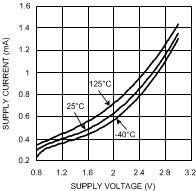 Figure 1. Supply Current vs Supply Voltage
Figure 1. Supply Current vs Supply Voltage
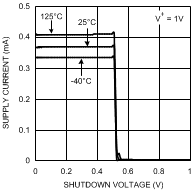 Figure 3. Supply Current vs Shutdown Voltage
Figure 3. Supply Current vs Shutdown Voltage
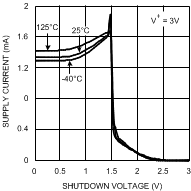 Figure 5. Supply Current vs Shutdown Voltage
Figure 5. Supply Current vs Shutdown Voltage
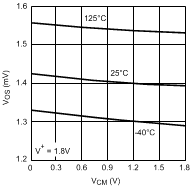 Figure 7. VOS vs VCM
Figure 7. VOS vs VCM
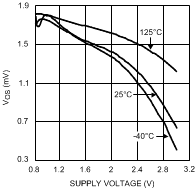 Figure 9. VOS vs Supply Voltage
Figure 9. VOS vs Supply Voltage
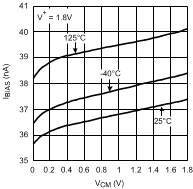 Figure 11. IBIAS vs VCM
Figure 11. IBIAS vs VCM
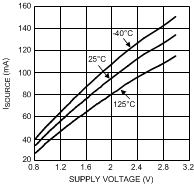 Figure 13. Sourcing Current vs Supply Voltage
Figure 13. Sourcing Current vs Supply Voltage
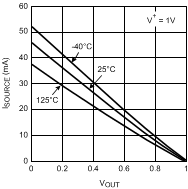 Figure 15. Sourcing Current vs Output Voltage
Figure 15. Sourcing Current vs Output Voltage
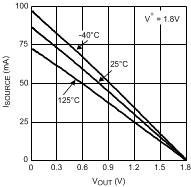 Figure 17. Sourcing Current vs Output Voltage
Figure 17. Sourcing Current vs Output Voltage
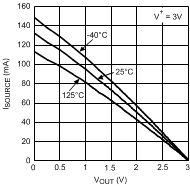 Figure 19. Sourcing Current vs Output Voltage
Figure 19. Sourcing Current vs Output Voltage
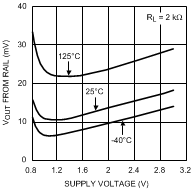 Figure 21. Positive Output Swing vs Supply Voltage
Figure 21. Positive Output Swing vs Supply Voltage
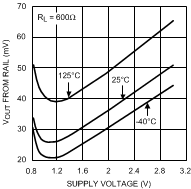 Figure 23. Positive Output Swing vs Supply Voltage
Figure 23. Positive Output Swing vs Supply Voltage
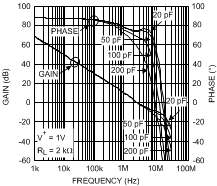 Figure 25. Open Loop Gain and Phase With Capacitive Load
Figure 25. Open Loop Gain and Phase With Capacitive Load
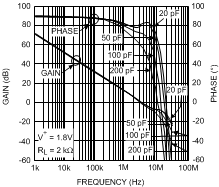 Figure 27. Open Loop Gain and Phase With Capacitive Load
Figure 27. Open Loop Gain and Phase With Capacitive Load
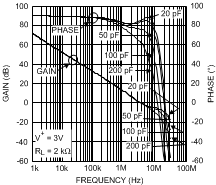 Figure 29. Open Loop Gain and Phase With Capacitive Load
Figure 29. Open Loop Gain and Phase With Capacitive Load
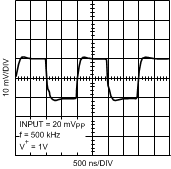 Figure 31. Small Signal Transient Response, AV = +1
Figure 31. Small Signal Transient Response, AV = +1
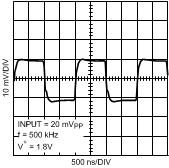 Figure 33. Small Signal Transient Response, AV = +1
Figure 33. Small Signal Transient Response, AV = +1
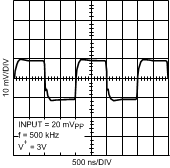 Figure 35. Small Signal Transient Response, AV = +1
Figure 35. Small Signal Transient Response, AV = +1
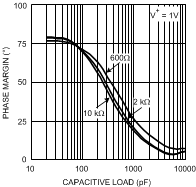 Figure 37. Phase Margin vs Capacitive Load (Stability)
Figure 37. Phase Margin vs Capacitive Load (Stability)
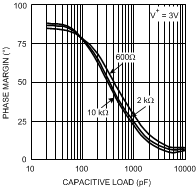 Figure 39. Phase Margin vs Capacitive Load (Stability)
Figure 39. Phase Margin vs Capacitive Load (Stability)
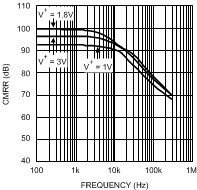 Figure 41. CMRR vs Frequency
Figure 41. CMRR vs Frequency
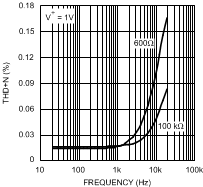 Figure 43. THD+N vs Frequency
Figure 43. THD+N vs Frequency
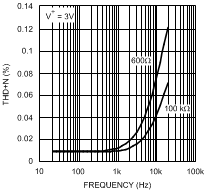 Figure 45. THD+N vs Frequency
Figure 45. THD+N vs Frequency
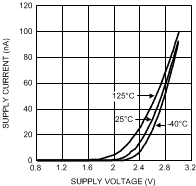 Figure 2. Supply Current vs Supply Voltage in Shutdown Mode
Figure 2. Supply Current vs Supply Voltage in Shutdown Mode
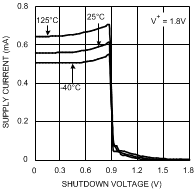 Figure 4. Supply Current vs Shutdown Voltage
Figure 4. Supply Current vs Shutdown Voltage
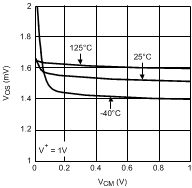 Figure 6. VOS vs VCM
Figure 6. VOS vs VCM
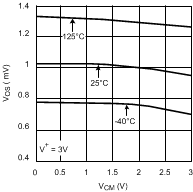 Figure 8. VOS vs VCM
Figure 8. VOS vs VCM
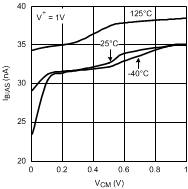 Figure 10. IBIAS vs VCM
Figure 10. IBIAS vs VCM
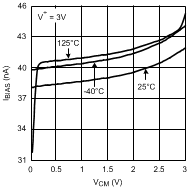 Figure 12. IBIAS vs VCM
Figure 12. IBIAS vs VCM
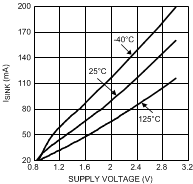 Figure 14. Sinking Current vs Supply Voltage
Figure 14. Sinking Current vs Supply Voltage
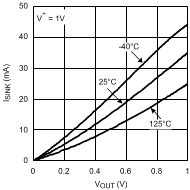 Figure 16. Sinking Current vs Output Voltage
Figure 16. Sinking Current vs Output Voltage
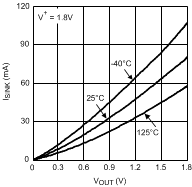 Figure 18. Sinking Current vs Output Voltage
Figure 18. Sinking Current vs Output Voltage
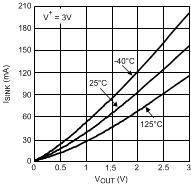 Figure 20. Sinking Current vs Output Voltage
Figure 20. Sinking Current vs Output Voltage
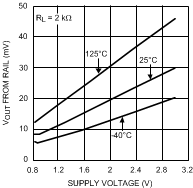 Figure 22. Negative Output Swing vs Supply Voltage
Figure 22. Negative Output Swing vs Supply Voltage
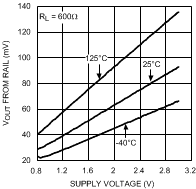 Figure 24. Negative Output Swing vs Supply Voltage
Figure 24. Negative Output Swing vs Supply Voltage
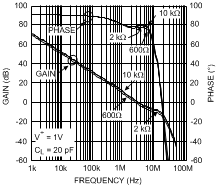 Figure 26. Open Loop Gain and Phase With Resistive Load
Figure 26. Open Loop Gain and Phase With Resistive Load
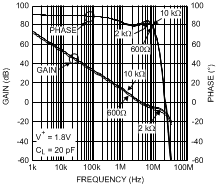 Figure 28. Open Loop Gain and Phase With Resistive Load
Figure 28. Open Loop Gain and Phase With Resistive Load
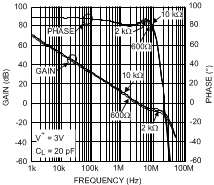 Figure 30. Open Loop Gain and Phase With Resistive Load
Figure 30. Open Loop Gain and Phase With Resistive Load
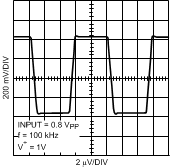 Figure 32. Large Signal Transient Response, AV = +1
Figure 32. Large Signal Transient Response, AV = +1
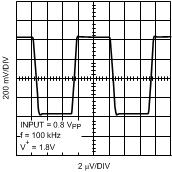 Figure 34. Large Signal Transient Response, AV = +1
Figure 34. Large Signal Transient Response, AV = +1
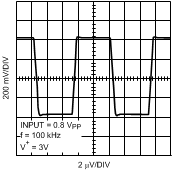 Figure 36. Large Signal Transient Response, AV = +1
Figure 36. Large Signal Transient Response, AV = +1
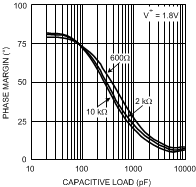 Figure 38. Phase Margin vs Capacitive Load (Stability)
Figure 38. Phase Margin vs Capacitive Load (Stability)
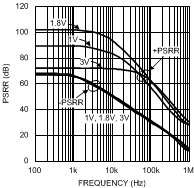 Figure 40. PSRR vs Frequency
Figure 40. PSRR vs Frequency
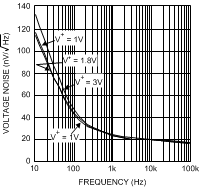 Figure 42. Input Referenced Voltage Noise vs Frequency
Figure 42. Input Referenced Voltage Noise vs Frequency
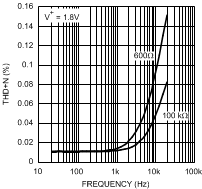 Figure 44. THD+N vs Frequency
Figure 44. THD+N vs Frequency
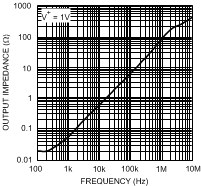 Figure 46. Closed Loop Output Impedance vs Frequency
Figure 46. Closed Loop Output Impedance vs Frequency